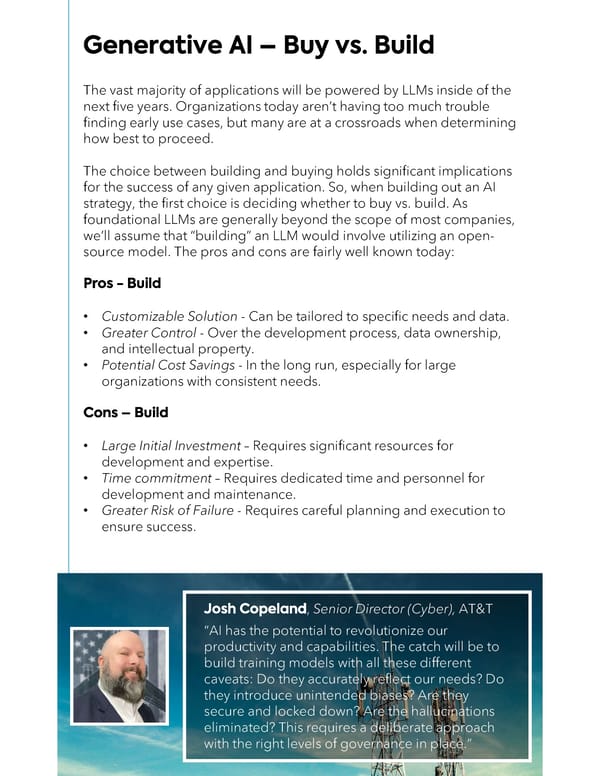The vast majority of applications will be powered by LLMs inside of the next five years. Organizations today aren’t having too much trouble finding early use cases, but many are at a crossroads when determining how best to proceed. The choice between building and buying holds significant implications for the success of any given application. So, when building out an AI strategy, the first choice is deciding whether to buy vs. build. As foundational LLMs are generally beyond the scope of most companies, we’ll assume that “building” an LLM would involve utilizing an open- source model. The pros and cons are fairly well known today: • Customizable Solution - Can be tailored to specific needs and data. • Greater Control - Over the development process, data ownership, and intellectual property. • Potential Cost Savings - In the long run, especially for large organizations with consistent needs. • Large Initial Investment – Requires significant resources for development and expertise. • Time commitment –Requires dedicated time and personnel for development and maintenance. • Greater Risk of Failure - Requires careful planning and execution to ensure success. , Senior Director (Cyber), AT&T “AI has the potential to revolutionize our productivity and capabilities. The catch will be to build training models with all these different caveats: Do they accurately reflect our needs? Do they introduce unintended biases? Are they secure and locked down? Are the hallucinations eliminated? This requires a deliberate approach with the right levels of governance in place.”
 2024 IT Priorities and Adoption of Gen AI Page 8 Page 10
2024 IT Priorities and Adoption of Gen AI Page 8 Page 10